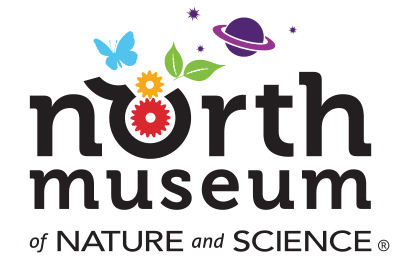When Your Classroom is a Planetarium, You See Stars
Nine-year-old Aleah Neely goes to school at the North Museum of Nature and Science. While she’s there she uses her iPad to attend Zoom sessions with her fourth-grade class at Price Elementary in Lancaster City. But at the museum, a live teacher helps her with the work, like math.
“By telling me other ways how to count, how to subtract – easier ways to do it,” Aleah says, her dark eyes dancing over her mask. Without the help, she says she might resort to a calculator, which she concedes would not improve her skills.
The museum calls it, “School@North Museum – Cooler than School,” because after zoom classes there are shows at the region’s largest planetarium, lessons examining actual dinosaur bones and fossils, robot building, environmental education and more. It opened in early September, to fill in for city schools that were entirely closed.
“Since March, we have recognized what a challenge it would be for students, parents and teachers to adjust to e-learning,” said museum chief executive officer Andrea Rush. “The families of more than 11,000 students needed to rapidly adapt. It is particularly difficult for students who need assistance with e-learning, or perhaps just don’t learn best solely online, because parents are working and now most often at home.”
A middle school environmental science teacher and an elementary-level classroom assistant oversee the children, who range from Kindergarten to grade 8. Schedules vary depending on when parents work and need child care. Aleah attends two days a week.


Safe and Fun for Students
Now, the program has about 14 students and continues to grow. The need to social distance requires creative scheduling. Students have their own appropriately- spaced tables and plexiglass cubes creating small classroom sizes with one-on-one tutor style interactions with educators.
This is important to Aleah’s mother, Aida Rodriguez, who was determined to keep Aleah out of school even if it is partially opened in the future. As many of us have learned just this week, the schools have now closed again because of a surge in coronavirus cases, leaving displaced students without a place to learn following the Thanksgiving holiday.
“I am not one of those people who is freaked out about Covid or anything but sending a kid somewhere where there are so many people…” Rodriquez shakes her head.
Aleah contradicts, “It freaks her out.”
Rodriquez gives her a look and continues, “She likes it here. She gets to go to the planetarium, play with the animals.”
Aleah, who is a shy about being interviewed, opens up about the after-school program at the museum. “There’s this thing called Schoolyard Habitat Lancaster in the backyard area. We go back there where all the birds go to get to the bird feeders. Right now, what we’re working on is a (landscape design) model of what we’re going to do in May.”
The May project is a parent-child planting on the lawn of the North Museum of a bird garden. “I want to plant this type of berry that humans and birds and other mammals can eat,” Aleah declares.
What she misses most about school is her friends. But she has made friends at the museum.

Peace of Mind for Moms
A single mother, Rodriquez is an administrative assistant at Brightside Opportunity Center. But this does not describe her job. She staffs the front desk and also manages the social services center’s social media and website.
Since Covid hit, she has been lucky to be able to bring Aleah to work. But when the museum reached out to partners, like Brightside, in search of students in need of funding for scholarships, Rodriquez signed on.
“On the days that she’s here (at the museum), it is easier for me to get more tasks done, to really focus,” Rodriquez says.
The museum is well equipped for this program, a regional leader in STEM education who typically supports educational programming in schools already. The museum feels fortunate “to contribute during this unprecedented crisis. Educating children in our community is each of our responsibilities. We are simply doing our part,” Rush says. The museum also offers science and nature-based activities, experiments, and learning packs for parents and teachers in need of at-home enrichment through their North Museum@Home suite of educational products.
The students are a good fit in another way too. They bring the museum, which has had to cut back its hours, to life. So much of the museum is designed to inspire children and foster an appreciation of science and nature. “It feels right to do what we’re doing during this time, we can see their eyes light up as they learn, even if we can’t see the smiles underneath their masks,” Rush says.
For more information on enrolling in School@North Museum visit our page.
To offer a scholarship to a student in need in your community, contact development@northmuseum.org
For press inquiries, contact press@northmuseum.org
